Sudden infant death syndrome
Sudden infant death syndrome has proved to be unexpected and unexplained death of babies under 12 months while sleeping.
It is the leading cause of infant mortality in children between the first month of life and 12 months of life in developed countries and although it is not very frequent, when it occurs, it is devastating for families.
Much has been studied about this strange syndrome that generates so much unease in parents and pediatricians. And many recommendations have been changing throughout history based on the results of hundreds of studies carried out by expert committees.
That is why today we will talk about how to prevent it.
Well, on October 24 2016 was presented at the Annual Conference and Exhibition of the American Academy of Pediatrics in San Francisco a new report published in turn in the November 2016 issue of the prestigious journal Pediatrics .
Rachel Moon, principal author of the recommendations, comments that
" we know that parents can be overwhelmed by the arrival of a child in the world and we want to provide them with a clear and simple guide on the way and place to sleep ".
And they have done with these recommendations to guarantee a safe sleep according to the latest scientific evidence available after the careful analysis of 63 different studies.
Do not forget that in the United States alone, 3,500 children under one year of age die each year due to sleep-related deaths, including sudden infant death syndrome (SIDS); deaths due to unknown causes and accidental death due to suffocation and strangulation. Its frequency varies depending on the geographical area. Thus in Australia, New Zealand and Northern Ireland the rate is 3-7 deaths per 1,000 live births. Western countries have an intermediate rate (1-3 per thousand live births), while Hong Kong, Japan and Sweden have a low rate (0.05 to 1 per thousand live births).
In Spain, the true incidence of sudden death is not well established. Studies of infant death are scarce. The mortality rate published by the National Institute of Statistics (INE) between 1985 and 1995 was 0.3 ‰ -0.4 ‰. Although it is very likely that there was a statement below the actual cases due to an inadequate registration of the causality of the death of infants. What we do know is that since the beginning of preventive campaigns encouraging parents to put their children to sleep on their backs, there was a decrease of more than 50% in the incidence of mortality in all countries.
Well, the last recommendations about safe sleep in infants during their first 12 months of life are:
Sleeping face up.
Neither side, nor upside down. Face up.
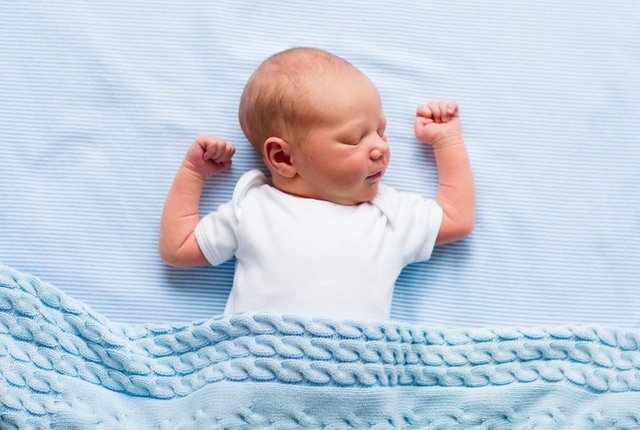
"Some parents worry that babies may suffocate / choke on their backs, but the anatomy of their airways and their gag reflex prevent this from happening.
Even babies with gastroesophageal reflux should sleep on their backs. " Many mothers say that their children turn around during the night, well, they also contemplate this assumption and say: " Some babies turn to their stomachs. You should always place your baby to sleep on his back, but if your baby turns comfortably in both positions (from upside down to upside down and vice versa), then you should not put it back on its head. "
Sleeping in their parents' room.
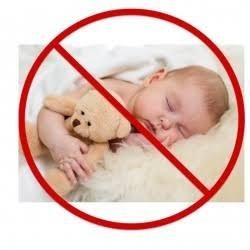
It is compulsory for up to 6 months of age and advised up to 12 months but in their own crib,bassinet or bed and that meets the requirements established by the Consumer Product Safety Commission "There are not enough Research studies on adjacent or sleeping beds . The AAP can not recommend for or against these products because there are no studies that have evaluated their effect in the SIDS or if these increase the risk of injury or death by suffocation / strangulation "
clear the cradle
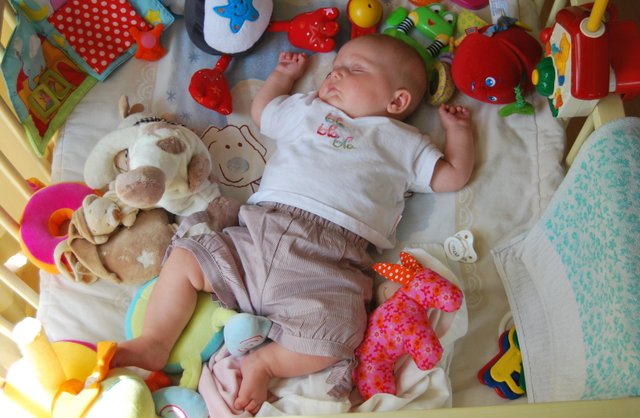
No dolls, no stuffed animals (poor baby, do you really think that with 2 days of life will pay attention to the cuddly toy?)
Sofas, armchairs or chairs,remove from the bed soft objects, stuffed animalsand pillows.
Avoid overcoating
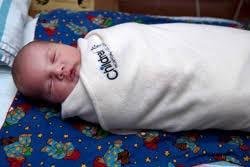
Do not overcoat him. "spring roll" with a blanket, or put 5 layers on top. Excess of clothes increases the risks.Leave the hands and arms free, that you can move freely.
Avoid the use of devices
devices such as wedges and positioners, anti-tilt cushions, etc ... There is no form or product that can prevent SIDS
Breastfeeding
Breastfeeding reduces sudden infant death by 50%
Use of a pacifier

we should always make use of pacifiers when napping and sleeping at night once breastfeeding is established.
No smokes
Avoid exposure to tobacco smoke in pregnancy and after birth.
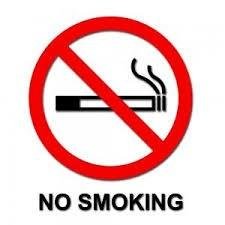
Alchohol and drugs
Avoid alcohol and drugs during pregnancy and after birth.
Prenatal care during pregnancy.
Follow the schedule of infant vaccinations.
A protective effect seems to have been found in properly vaccinated children
Monitors
Do not trust monitors for the heart or breathing to reduce the risk of SIDS . If you have doubts, the ideal thing is to consult your pediatrician.
Put the baby to play every day on his stomach whenever he is watched to favor his psychomotor development to avoid postural plagiocephaly or the flattening of the skull by support.
Skin-to-skin contact
After birth as soon as possible at least during the first hour regardless of whether it was a vaginal delivery or cesarean section.
Seek medical help
Follow the recommendations of your pediatrician, neonatologist or health professional and the neonatal intensive care units to reduce the risk of premature infant death.

And what about co-sleeping? I put him with me in bed? Is there more risk, less risk?
This issue has been a subject of controversy and study in recent years. The latest recommendations are the following. As you have read, breastfeeding has a protective effect in sudden infant death and co-sleeping, in turn, favors the maintenance of breastfeeding.
I know, you are exhausted and many times you end up with the baby in the bed next to you. Beware, keep in mind that in recent studies consider that co-sleeping increases the risk of sudden death so it should NOT be recommended in:
- Children under 3 months.
- Premature or underweight children.
- Parents who use tobacco, alcohol, sedatives or drugs.
- Extreme fatigue situations, such as postpartum.
- soft surfaces: sofas, armchairs, water beds ...
- Share the bed with other relatives, with other children or with multiple people.
I understand that this can be overwhelming and generates some anguish, but it is everyone's responsibility to follow the recommendations of experts who issue consensus documents after years of study and research.
Vote for witness
If you have some witness vote space, can you consider voting @teamsteem, @steemgigs @curie @luckstokes ( lukestokes.mhth )and @adsactly (adsactly-witness ) for witness ? if yes, see details on this footervisit https://steemit.com/~witnesses and type in their names to vote as witness